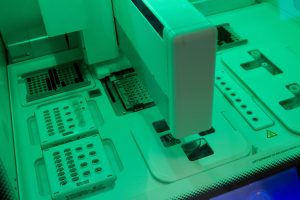Biomorphic Urban Intelligence: Living Architectures That Evolve With Human Potential
Welcome to the future of urban living – a world where buildings not only serve as structures to shelter humans, but also actively adapt and evolve with our ever-changing needs and potential. This is the concept of Biomorphic Urban Intelligence, and it is revolutionizing the way we think about architecture and urban design. In this article, we will explore the innovative and cutting-edge approach of Biomorphic Urban Intelligence, and how it is shaping our cities for a more sustainable and human-centered future.
The Rise of Biomorphic Urban Intelligence
What is Biomorphic Urban Intelligence?
Biomorphic Urban Intelligence, also known as biourbanism, is a concept that originated from the fields of biology and artificial intelligence. It involves the integration of organic and intelligent systems into the design and functioning of urban environments. Biourbanism aims to create living architectures that can respond and adapt to human needs, behaviors, and potential. This not only enhances the livability and functionality of cities, but also promotes sustainability and resilience in the face of urbanization and climate change.
The Evolution of Urban Architecture
Traditional urban architecture is built with a focus on static and rigid structures that can withstand the test of time. However, with rapid urbanization and technological advancements, the needs and demands of urban dwellers are constantly evolving. This has led to the rise of biourbanism, which introduces the element of adaptability and evolution into urban architecture.
Biomorphic urban buildings are designed with the ability to sense and respond to human activities and environmental conditions. They are equipped with advanced technologies, such as sensors, actuators, and artificial intelligence systems, which enable them to adjust their form and function according to the needs of their inhabitants.
How Biomorphic Urban Intelligence is Transforming Cities
Promoting Sustainable and Resilient Cities
One of the main goals of biourbanism is to create sustainable and resilient cities. By incorporating organic and intelligent systems, biourban buildings are designed to be energy-efficient and environmentally friendly. They are equipped with features such as green roofs, rainwater harvesting systems, and natural ventilation, which help to reduce energy consumption and mitigate the urban heat island effect.
Biomorphic urban architecture also promotes resilience by being able to adapt and withstand natural disasters. For example, buildings can change their shape and use materials that are flexible and durable, making them better equipped to withstand earthquakes and hurricanes. This helps to create safer and more livable cities for its residents.
Enhancing the Quality of Urban Life
In addition to promoting sustainability, biourbanism also prioritizes the well-being and quality of life of urban inhabitants. By having buildings that can adapt and evolve with the needs of its occupants, biourbanism creates a more personalized and comfortable living space. For example, a building can adjust its lighting and temperature according to the preferences of its inhabitants, or create different spaces for work, relaxation, and socializing based on the activities of its residents.
Biomorphic urban buildings also foster a stronger connection between humans and nature. The incorporation of green spaces and natural elements into urban architecture helps to reduce stress, improve air quality, and promote overall health and well-being. This creates a more harmonious and livable environment for urban dwellers.
The Future of Biomorphic Urban Intelligence
The concept of biourbanism is still in its early stages, but the potential for its application is vast. As the world continues to urbanize and face the challenges of climate change, biourbanism offers a promising solution to create sustainable, resilient, and livable cities. The use of smart technologies and artificial intelligence will also continue to advance and enhance the capabilities of biourban buildings, making them even more adaptable and dynamic.
In conclusion, biourbanism is more than just a design trend – it is a paradigm shift that is transforming the way we think about urban living. Biomorphic urban intelligence is at the forefront of this transformation, creating a new generation of living architectures that evolve with human potential. As we move forward into the future, we can look forward to a more harmonious and sustainable coexistence between humans and the built environment.











